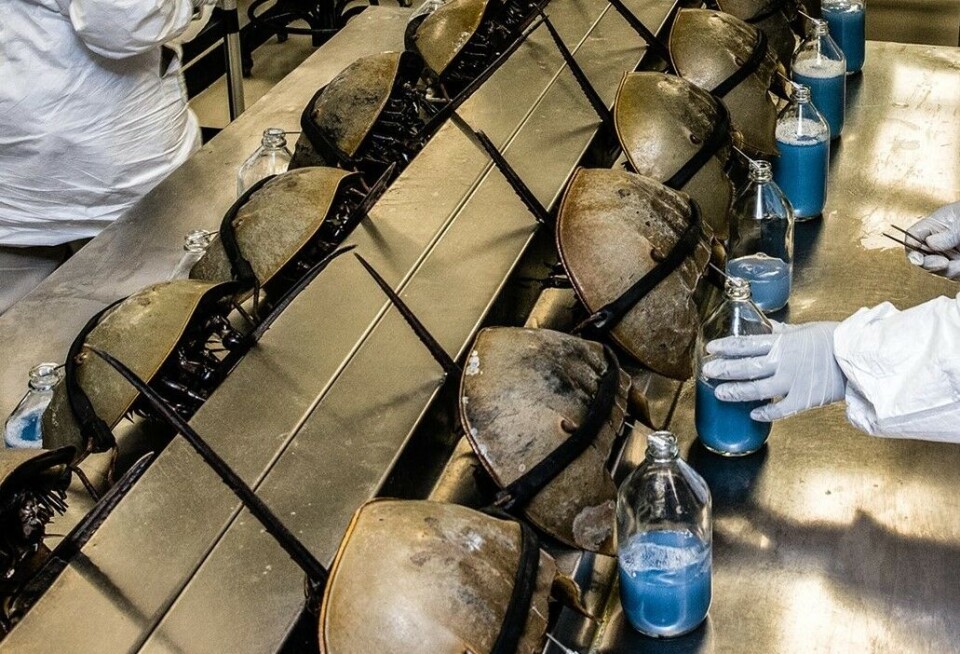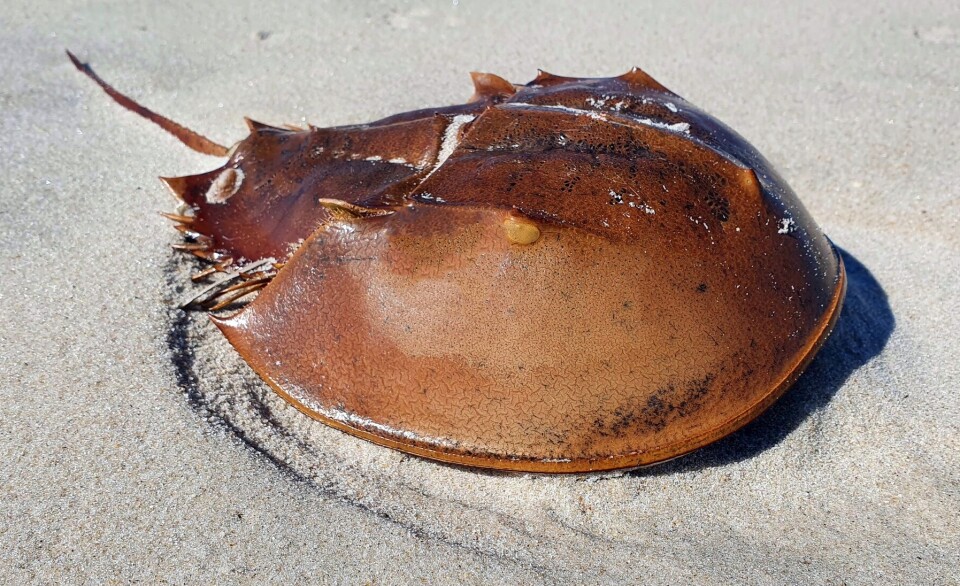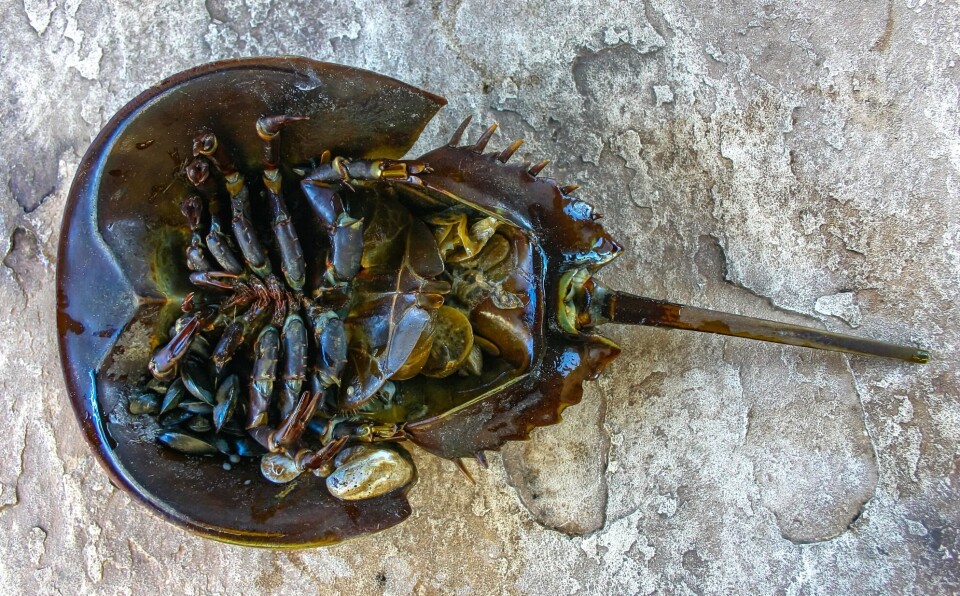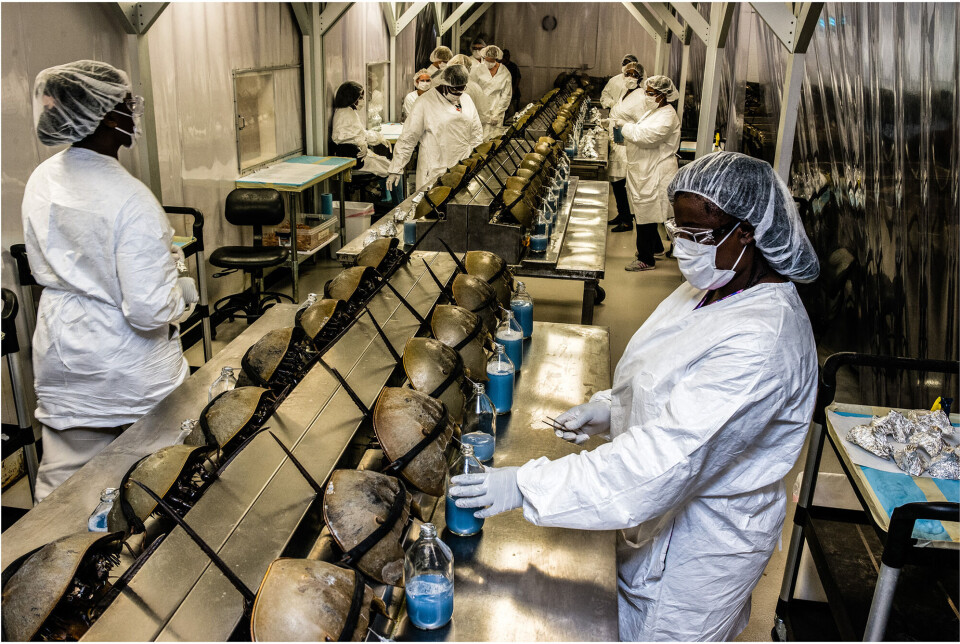
These animals are drained of blood in order to save human lives
It looks a bit like a scene from a sci-fi movie.
Horseshoe crabs are tied up and mounted in a row. Each of them is attached to a cannula through which the blood flows and is collected in glass bottles. The bottles are slowly filled with light blue blood.
Around them, people in white coats with masks and gloves are moving.
They are after the horseshow crabs’ very special, blue blood.
It is used to test whether vaccines and medicines are dangerous. The blood has saved many human lives but has also led to the loss of many horseshoe crab lives.
Horseshoe crabs are now on the international red list of endangered species. Is it time to find other ways to test vaccines and medicines?
Many die after the bleeding
Most horseshoe crabs are released back into the ocean after they have been bled. However, many of them do not survive the bleeding.
Among other risks, there is the danger that an infection could develop in the animals’ wounds. Having less blood makes them less capable of transporting oxygen around their bodies – something that is absolutely vital.
They may also have a weaker immune system – the body's own defense against bacteria and viruses.


Why is the blue blood so unique?
Professor Anne Sverdrup-Thygeson wrote the book Tapestries of Life in 2020. In it, she discusses how the very special properties of horseshoe crab blood were discovered, which occurred as early as the 1950s.
Researchers noticed that the blood sometimes turned into a gel-like mass. Eventually, they realised it was bacteria that caused this to happen.
Whenever the blood comes close to bacteria, it immediately clumps together.
Even just a little bit of common bacterial toxin, which can cause fever and in the worst case lead to death in humans, was enough to turn horseshoe crab blood into gel, Sverdrup-Thygeson writes in her book.

Has saved both human lives and rabbits
This was quite a discovery.
Before it was discovered that horseshoe crab blood behaved this way, researchers had to test medicines and vaccines on rabbits.
Drawing blood from horseshoe crabs and using it became common at the end of the 1970s, and now it is done all over the world.
Most viewed
“And this is big business. A litre of ready-to-use horseshoe crab blood is worth about NOK 150,000,” writes Sverdrup-Thygeson.
That is close to 14,000 USD.
New technology could replace this method
Since the blood harvesting results in so many horseshoe crabs dying, researchers have been exploring alternative methods.
One promising new technology is gene editing, which could offer a solution.
With this technology, researchers can synthesise an artificial version of the substance that reacts to bacteria and causes the horseshoe crab blood to clot.
This s can be achieved in a laboratory without involving any animals.
Thygeson-Sverdrup is optimistic that this approach could replace the need to harvest blood from horseshoe crabs.
"Let's just hope it's in time, so that the horseshoe crabs can continue to live for a few million more years," she writes.
References:
Sverdrup-Thygeson, A. ‘Tapestries of Life - Uncovering the Lifesaving Secrets of the Natural World’, Mudlark, 2022. ISBN: 9780008402754 (The Norwegian version of this book was published in 2020)
Store Norske Leksikon: Dolkhaler (Horseshoe crabs)
———
Translated by Alette Bjordal Gjellesvik
Read the Norwegian version of this article on ung.forskning.no






































